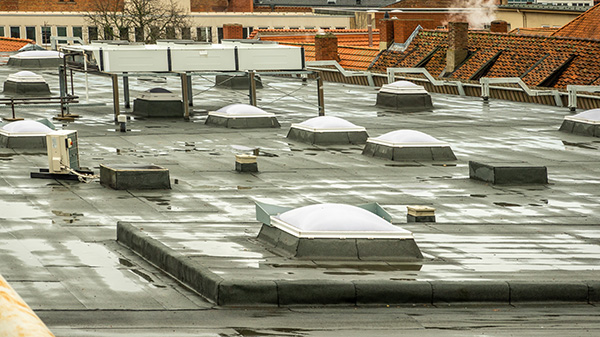4 Steps to Assess if a Roof Replacement Is Necessary
Author: Amy Freeman | January 29, 2024
Commercial roofs protect building occupants and the building itself from the elements and help manage energy use and costs. If something goes wrong with the roof, building owners need to take action quickly to correct it and protect their assets. A commercial roof assessment gives you the information you need to recommend a course of action to a commercial building owner, whether that means roof replacement or repair.

What Is a Commercial Roof Assessment?
A commercial roof assessment is an evaluation of the performance and condition of a commercial roof. During a roof assessment, a roofing contractor thoroughly inspects all roof areas, including the interior; identifies problems or potential issues; and makes recommendations to the building owner, including repair or replacement advice.
Regular roof assessments allow building owners to protect their assets and take action quickly when repairs or other work is required. Assessments can help save building owners considerable money and time.
Roof Assessment Steps
When performing a commercial roof assessment, you need to be thorough to accurately detect and diagnose any issues with the property. Following these four steps will ensure you make the right recommendation to your commercial customer, leading to repeat business and higher customer satisfaction.
1. Examine the Building's Interior
Start your roof assessment on the inside of the building, particularly if the owner has noted any signs of water infiltration or leaks. Examine the interior building walls, looking for stains or other signs of moisture. It can also be helpful to examine interior areas that are near potential leak sites, such as underneath skylights or beneath HVAC units.
2. Walk on the Roof
After inspecting the interior, head up to the roof to examine it, looking for signs of wear and tear, damage and water issues. Depending on the size of the roof, you may want to have two or more people perform this part of the assessment.
While on the roof, look for:
- Ponding water
- Cracks
- Holes
- Loose shingles or nails
- Blisters
- Other signs of damage
To ensure you don't skip over or miss any part of the roof, begin the assessment along the perimeter, then work your way toward the roof's center. If you have multiple people performing the assessment, each person can take a side. The roof's edge is also where you're most likely to encounter problems, which is another reason why it's a good starting point.
Remember to play it safe any time you go up on a roof. Use a fall protection system that includes a harness and anchor to protect yourself in case of a fall.
3. Take Samples and Photographs
A visual inspection of the roof will only take you so far. To provide your customer with the most accurate recommendation, you'll want to closely examine the roof's materials. Take photos of any suspect areas, and, if possible, collect material samples.
Photos will provide you with documentation of the roof's condition, particularly of any areas of concern. The samples you collect will allow you to perform moisture testing to determine how deeply water is seeping in through the roof's materials, and thermal imaging to evaluate the overall condition of the material.
Collecting samples can also provide insight into the type of decking the roof has, which can be particularly valuable if you're unable to identify the decking during an interior inspection.
4. Compile a Report
The last step when performing a roof assessment is to put together a report for your customer. The report should include the details of what you saw, including any photos you took and the results of any sample analysis you performed. Include detailed information on areas of concern, such as leaks or considerable damage.
It's also important that your report provides your customer with a recommendation for next steps, whether that's to repair portions of the roof or replace it entirely.
How to Decide Between Roof Repair and Roof Replacement?
To repair or replace — that's the question you want to answer with a commercial roof assessment. Whether repair or replacement is the right call depends in large part on the extent of the damage.
If your assessment reveals that only a small area of the roof is damaged or allowing water into the building — for example, less than 5% of the roof — a repair is typically the more cost-effective and efficient option for your customer.
Should your assessment reveal a considerable amount of damage or water infiltration affecting at least one-quarter of the roof's area, then replacement is usually the best course of action.
When explaining your recommendation to your customer, detail the costs of roof replacement versus repair and why you think one is better than the other. Expect your customer to have questions about your overall assessment and recommendation and be prepared to answer them.
Performing a roof assessment is an effective way to determine the extent of a commercial building's problems and to provide your customer with an accurate idea of the best way to proceed.